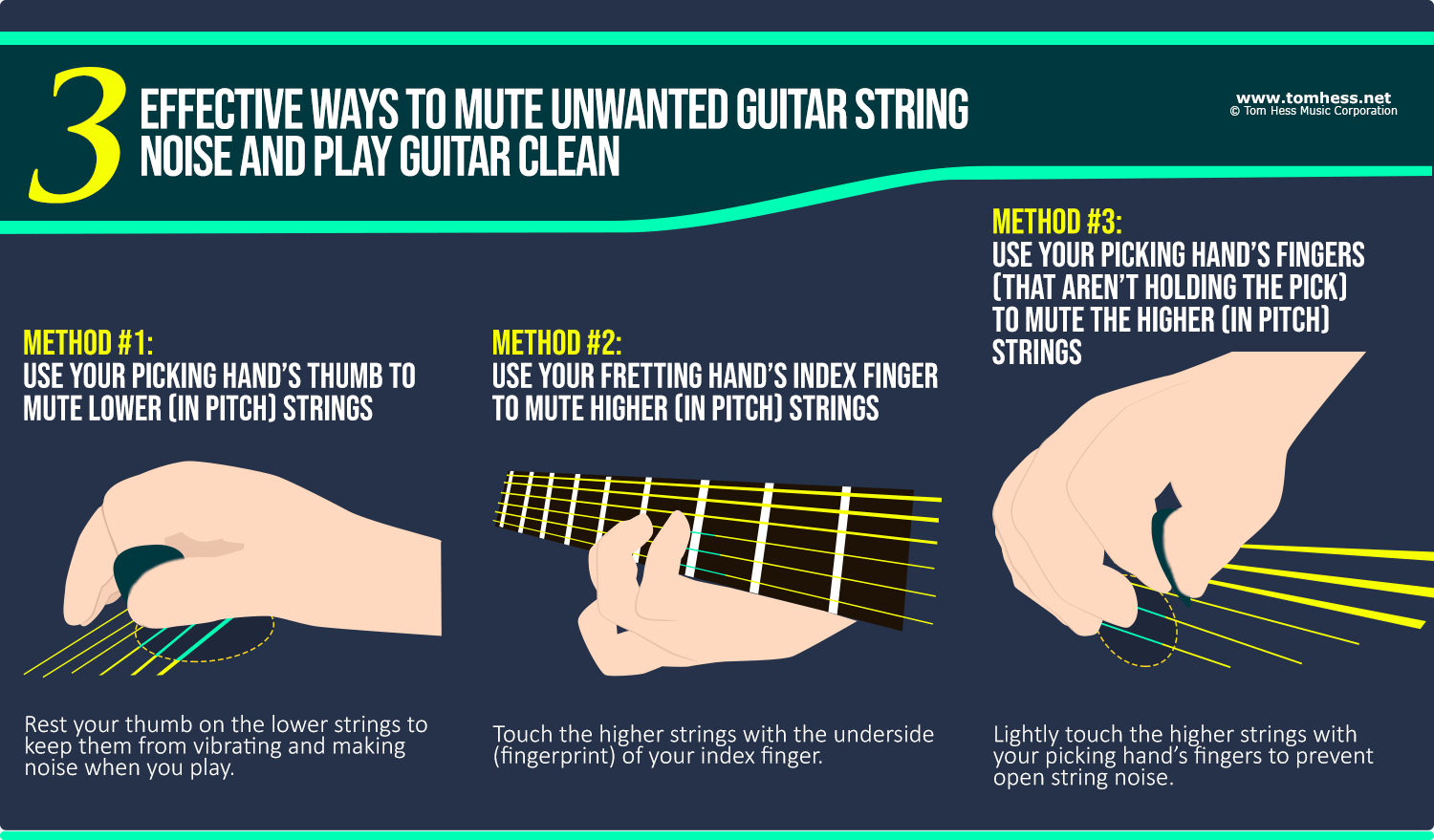These Cool And Fun Melodic Guitar Arpeggios Make Your Lead Guitar Playing Sound Pro

EMAIL TO GET ACCESS
By submitting your info, you agree to send it to Tom Hess Music Corporation who will process and use it according to their privacy policy.
In this lead guitar article...
I’ll show you how to play cool lead guitar solos using melodic guitar arpeggios that:
- are easy to play
- sound great in just about every style
- make you sound pro even if you are not playing them fast
- give you a lot of new guitar lick ideas for lead guitar solos that sound different from the guitar licks you normally play.
And yes...
The term “melodic guitar arpeggios” isn’t a contradiction.

EMAIL TO GET ACCESS
By submitting your info, you agree to send it to Tom Hess Music Corporation who will process and use it according to their privacy policy.
Contrary to what some guitarists think, guitar arpeggios aren’t just all about shredding and playing advanced and difficult guitar licks.
You can combine arpeggio guitar licks with melody and make them sound dramatic, soulful and highly expressive.
(If you like the melodic solos of guitarists like Jason Becker and Marty Friedman, you’ll love these.)
To begin...
Watch this guitar arpeggio video that shows you simple ways to combine arpeggio guitar licks with melody:
Now that you know the basics of playing melodic guitar arpeggios, let’s go deeper.
Here are 5 more ways to play lead guitar licks that combine guitar arpeggios with melodic phrasing:
Tip #1 For Playing Melodic Guitar Arpeggios: Master Your String Bends And Vibrato
One of the best ways to spice up your lead guitar arpeggio licks is to play them slowly and bend into some of the arpeggio notes from 1/2 step below.
For example: take an A minor arpeggio (A C E). As you play it, bend into the E note from a D# to create a very exotic sound (made popular by Marty Friedman and Jason Becker).
You can also bend from a G# to A or from B up to C as well... for a slightly less exotic (but still cool) lead guitar phrasing sound, because these notes are all from the A minor scale.
Sprinkle these bends into your arpeggio licks from time to time and have fun!
 Improve Sweep Picking Accuracy
Improve Sweep Picking AccuracyFind out how to play clean sweep picking arpeggios for lead guitar.
 Play Fast Sweep Picking Arpeggios
Play Fast Sweep Picking ArpeggiosPlay lightning fast arpeggios using
a sweep picking rolling technique.
 How To Fix Unclean Guitar Playing
How To Fix Unclean Guitar PlayingFix sloppy playing by reading this article about muting string noise.
Question: “But Tom Hess, if you add these lead guitar bends to your guitar licks, are you even playing guitar arpeggios anymore?”
Answer: Yes, you are. You are simply playing guitar licks that are rooted in a guitar arpeggio and ornamented with exotic lead guitar bends. But the core of what you are hearing is still ‘a guitar arpeggio’.
Also...
As you add these bends to your arpeggio guitar licks, remember:
Another big part of what makes melodic guitar arpeggios ‘sound’ melodic is your control over your vibrato.
Vibrato control consists of:
- Balancing speed and width of your vibrato. If your vibrato is too fast and too narrow, your lead guitar licks sound nervous and out of control (even if you feel perfectly calm while playing).
On the flipside...
If your vibrato is too slow and too wide, it no longer sounds like vibrato and sounds like a series of slow lead guitar bends.
As a general rule: the faster your vibrato is, the wider it ought to be to sound expressive and make your arpeggio guitar licks sound great. The slower it is, the narrower it should be to make your melodic guitar arpeggios sound great.
- Intonation. At its core, lead guitar vibrato is nothing but a series of string bends. And to make them sound good (and keep your vibrato in tune), release each bend all the way back down to its original pitch. This lead guitar video shows you how.
- Timing. Believe it or not, timing is an important part of making your vibrato (and melodic guitar arpeggios) sound expressive.
To make sure your vibrato is in time, practice locking in your lead guitar notes with the tempo of the track you are playing your arpeggio guitar licks over, like this:
Tip #2 For Playing Melodic Guitar Arpeggios: Control String Noise
Sloppy lead guitar playing never sounds good and arpeggio guitar licks are no exception.
The first step to making your melodic guitar arpeggios free of string noise is to understand where lead guitar string noise comes from.
Lead guitar licks may sound sloppy for 3 reasons:
1. Lack of muting of the lower in pitch (thicker) strings.
2. Lack of muting of the higher in pitch (thinner) strings.
3. Bleeding (ringing together) of the notes you want to ring separately. This last one is particularly common when playing arpeggio guitar licks.
There are 3 ways to mute string noise in your lead guitar licks:
- Use picking hand thumb muting to mute the lower (thicker) strings. Like the name implies, you rest your picking hand’s thumb on the thicker strings while playing guitar arpeggios (and all other lead guitar licks).
The thumb then slides up and down the strings, muting string noise.
Question: “Tom Hess, what about muting string noise with the palm like many guitar players do? Is that a good alternative to thumb muting?”
Answer: You can do whatever you want, but I think thumb muting is far better. Here are just 2 reasons why:
Thumb muting forces your guitar pick to rest in the “string trench” (this is a term I invented to mean: ‘inside the space of the strings’). This makes your lead guitar picking technique more efficient (and therefore – faster).
The side of the thumb (used for muting string noise) also has less skin. So, muting with it is more secure (and more immediate) compared to muting with the palm.
But thumb muting is just one of the techniques you can use to mute string noise in your
guitar arpeggio licks.
Here is another one:
- Use the index finger (of the fretting hand) to mute the higher (in pitch) strings. Simply rest the finger across those strings, almost like you are ‘about to’ fret a barre chord. But don’t actually press the strings down. Simply lay the finger on the strings to mute them.
Finally:
- Use the fingers (of the picking hand) that aren’t holding the pick to lightly touch the higher (in pitch) strings. This keeps them from making noise as you play your arpeggio guitar licks.

Tip #3 For Playing Melodic Guitar Arpeggios: Practice Your Sliding
Lead guitar sliding can add a lot of expression to all your lead guitar licks... and guitar arpeggios are no exception.
That said...
There are way more lead guitar slide variations than most guitarists think.
For example, on top of ascending slides (where you slide from a lower lead guitar note to a higher one)...
Or descending slides (where you slide from a higher lead guitar note to a lower one)...
We have other lead guitar slide variations, such as:
- Backslides: to do a backslide, you play the note you want to hear, then slide up (or down) away from it and return back to that note.
That said: a backslide needs to be done quickly. And to your listener, it should sound as ONE event – not as 3 separate events.
Watch this video to see the right way to do backslides:
- Super slides: this is one of my favorite lead guitar slide variations. And it’s very simple to add it to your arpeggio guitar licks. All you do is slide to a note that’s 12 frets (or more) away from the note you are sliding.
The only real ‘challenge’ with super slides is doing them cleanly (by following the techniques from earlier in the article about string noise control).
Here is a video showing super slides in action:
- Re-articulation slides: re-articulation is a fancy name for “playing something again”.
And when it comes to lead guitar slides, a re-articulation slide happens when you play a note and slide back into that same note (from above or below).
For example: play an F# on the 11th fret of the G string as a regular note. Then, slide into it from the 9th fret (re-articulating that same note with a slide).
- Slide + string bend combinations: this is where you slide into any note from which you do a string bend.
Like this, for example: if you were going to bend from an F# on the G string (11th fret) to the G# (13th fret), you could start the bend by sliding into the F# (11th fret) and doing the bend from the F#.
Since you’d only be picking the string at the start of the slide, this gives your lead guitar licks a very smooth and melodic sound.
Tip #4 For Playing Melodic Guitar Arpeggios: Use The Neck Pick Up On Your Guitar
Using the neck pick up gives your lead guitar licks a very smooth and thick sound... which is very desirable when you are trying to play melodic guitar arpeggios.
So, this means 2 things:
1. You should have your pick-up selector flicked all the way to the top when you play your guitar arpeggio licks.
2. Practice switching from the bridge pick up to the neck pick up when you play your lead guitar licks and solos (while continuing to play cleanly and in time).
Believe it or not, even ‘switching’ between pick ups is a skill that takes practice. You need to be able to reach the pick-up selector using your ring (and/or pinkie) fingers of the picking hand without removing the thumb from the strings.
Question: “But Tom Hess, what if my guitar is a Les Paul or an ESP? Its pick-up selector is located in the most awkward position and it’s not easy at all to reach it with my picking hand while playing!”
Answer: That is why different guitar brands exist :) When you choose a guitar, find one that has the pick up selector in a position that makes it easy to play lead guitar (and get the right tone for your melodic guitar arpeggios).
The position of the pick up selector is one of the non-negotiable things for me when I am choosing a guitar for myself.
Tip #5 For Playing Melodic Guitar Arpeggios: Study Singers To Get Better At Melodic Lead Guitar Playing
Believe it or not, singers were among the biggest influences on my lead guitar playing.
And one of my favorite lead guitar exercises (that I recommend you also do to improve your ability to play melodic guitar arpeggios) is:
1. Transcribe a vocal melody by a singer you like – copying all the phrasing nuances as closely as you can on your guitar.
2. Treat the melody a ‘musical skeleton’ from which you can play a melodic lead guitar solo.
3. Flesh out the melody using your faster guitar lick ideas, including – you guessed it – melodic guitar arpeggios.
This strategy not only helps to make your playing more creative...
It also makes your lead guitar solos sound like a ‘song within a song’ (that extend the emotion already present in the song)... as opposed to a collection of lead guitar licks that just happen to be in key.
Watch this video to see a demonstration of this process with guitar arpeggios:
Now that you know how to make your arpeggio guitar licks sound melodic, let me show you how to make your entire playing more consistent and reliable, so you can play at your best when it really matters most. I show you how in my free eGuide “The Guide To Playing Guitar Accurately, Consistently And Reliably, Even On Your Worst Days”. Download it today and discover the guitar mastery secrets most guitarists will never know.


transform your guitar playing by studying with the best rock guitar tutor online.

